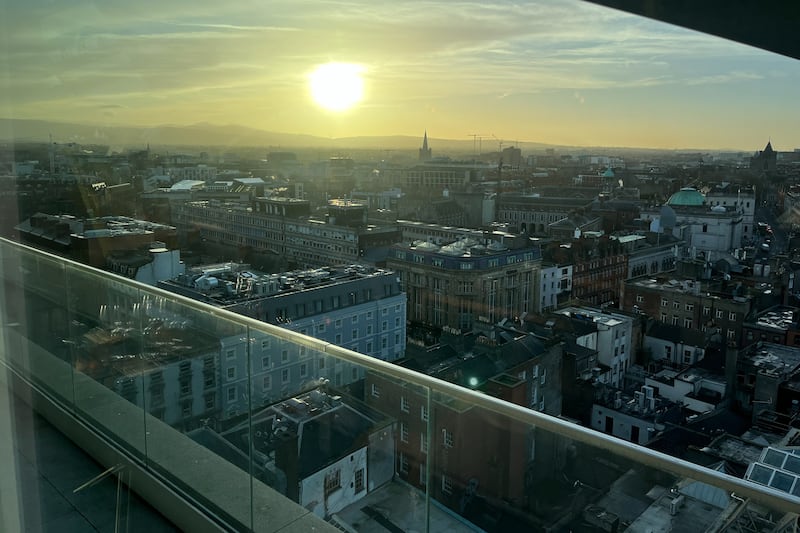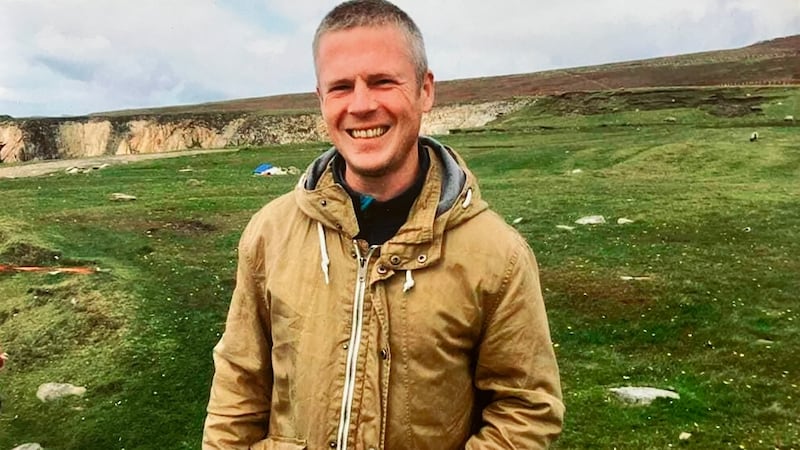James Cousins, who was born 150 years ago on July 22nd, was a multifaceted man: writer, playwright, actor, teacher, suffragist, critic, editor, poet and theosophist. He contributed significantly to Irish culture during the first half of his life before departing for India, where he was to spend the second half, during which he dedicated himself to cultural and educational activities in his adopted country.
Born in Cavour Street, Belfast, the eldest child of James Cousins, a deep-sea mariner, and Susan Davey, he attended a local national school before working at various jobs, such as messenger to a pawnbroker, office boy and clerk, eventually acting as private secretary to lord mayor of Belfast Daniel Dixon for three years. During that time, he founded, edited and wrote most of a monthly shorthand journal called the Irish Phonographic Bulletin (1892-94) and set up and ran the Stenographic Institute in Belfast in 1894.
That same year he published his first poetry collection, Ben Madighan and Other Poems, and started to learn Irish in the Belfast branch of the Gaelic League.
Moving to Dublin in 1897, he became a vegetarian, a diet he followed for the rest of his life; he and his wife founded the Irish Vegetarian Society in 1905 and he lectured on the cruelties and diseases connected with meat-eating.
Frank McNally on 19th century engineering project that linked Tipperary with ‘civilisation’
A Passage to Innocence – Frank McNally on an anthology of old school routes remembered
Craicing the Case – Frank McNally on the origins of a cultural and linguistic phenomenon
Frank McNally on a grand stretch in the evenings, a new Dublin restaurant and ‘Gloomsday’
He became involved in the literary revival in Dublin, getting to know George Russell (AE), WB Yeats, Edward Martyn and the Fay brothers, who were central to the drama movement of the time. Following minor acting parts in AE’s Deirdre and Yeats’s Cathleen Ni Houlihan in 1902, he was closely involved in the formation of the Irish National Theatre Society (INTS), becoming a committee member. The first play he contributed to it was The Sleep of the King, followed by his most successful play, The Racing Lug, and The Sword of Dermot; Arthur Griffith’s United Irishman published all three plays.
James Joyce thought little of his poetry or drama and Yeats dismissed his comedy, Sold, as “vulgar rubbish”. Yeats manoeuvred successfully to get him out of the INTS, after which the Cumann na nGaedheal Theatre Company performed his plays. Poetry collections published by him included The Voice of One (1900), The Quest (1906) and Etain the Beloved and Other Poems, but they’re now largely forgotten.
He married Margaret Gillespie in 1903 and through her became closely involved in the suffrage movement. She co-founded the Irish Women’s Franchise League, which he joined, and co-edited the Irish Citizen with Francis Sheehy-Skeffington. AE’s mysticism greatly influenced him; he developed a lifelong interest in theosophy, was very active in the Theosophical Society and held seances in his home.
From 1905, he taught English at the High School on Harcourt Street, Dublin, but financial difficulties caused him and his wife to emigrate to Liverpool in 1913. Their decision to move to India in 1915, on the invitation from the theosophist Anne Besant, was to prove a major step in their lives. Besant offered him a post as literary subeditor of her paper New India. When he wrote an article defending the Easter Rising, she had to move him on by facilitating a lectureship for him at the Theosophical School in Madanapalle, Andhra Pradesh (he afterwards became the school’s principal). Apart from trips to Europe and America, and a visiting professorship for him at Keio University, Japan, in 1919, the Cousinses remained in India for the rest of their lives.
According to Frances Clarke, who wrote the entry on him in the Dictionary of Irish Biography, Cousins was responsible for the opening of the first public art gallery in India, at Mysore in 1924; a second gallery followed at Travancore in 1935, and in 1938, he began a 10-year appointment as a full-time art adviser to the government of Travancore. He got to know many prominent people in India, such as the poet Rabindranath Tagore, the painter Abdur Rahman Chughtai, Mahatma Gandhi, and he encouraged Kuvempu, who became a famous Indian poet, to write poetry in his native Kannada, the language of southwest India.
Cousins continued to write extensively and most of his more than 100 books were published in India. In addition, he wrote regularly for many Indian journals and papers. He formally converted to Hinduism in 1937. His wife also played a very active role in India, including founding the All Indian Women’s Conference in 1927 to improve education for women and children and campaign for women’s rights. Their joint-autobiography, We Two Together, was published in 1950.
Margaret Cousins died in March 1954.
He survived her by nearly two years, dying on February 20th, 1956, in the Mission Hospital at Madanapalle.











